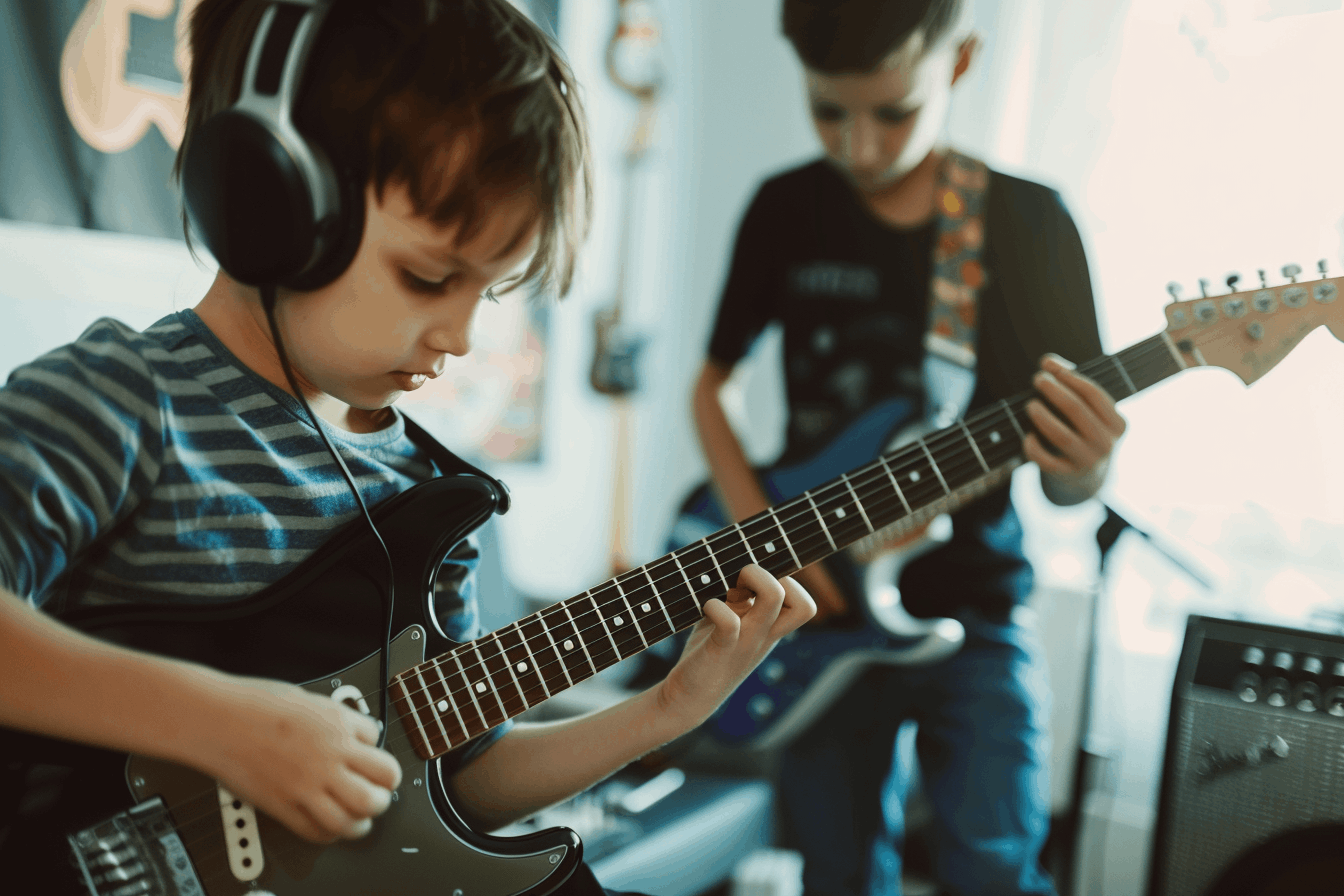The first instrument your child plays can feel like a defining choice. Acoustic or electric? Classical or modern? For many parents, there’s an unspoken assumption that starting with the “regular” version—the acoustic guitar, the traditional violin, the upright piano—is somehow more proper. More disciplined. More real.
But in today’s musical world, that’s not always true.
In fact, starting your child on an electric instrument—whether it’s an electric violin, guitar, bass, or even digital piano—can open doors, spark enthusiasm, and make the learning journey more personal from the very beginning.
So let’s clear something up: Yes, it’s okay. And sometimes, it’s more than okay—it’s the right thing to do.

Children are more likely to stick with an instrument if they love the way it sounds. That emotional connection is everything. If your child dreams of shredding on an electric guitar like their favorite band, handing them a nylon-string classical guitar might feel like a letdown.
Electric instruments often produce richer, fuller, and more “exciting” sounds—especially when paired with amps, effects, or headphones. That sonic feedback can be addictive in the best way, encouraging daily practice not because they have to, but because they want to.
Technically, the fundamentals of music don’t change based on the instrument. Notes are notes. Rhythm is rhythm. Whether your child learns scales on a classical violin or an electric one, they’re still developing:
Yes, certain techniques might be different. But the core learning remains solid, and most skills are transferable if your child later switches to acoustic or joins an ensemble.
In fact, many professional musicians started on one and moved to the other fluidly.
Instruments like digital pianos make music learning more accessible than ever. They offer:
Similarly, electric guitars and basses are often easier on small fingers. The strings are lighter. The neck is narrower. That means less early frustration—and more confidence.
And for electric violins, features like built-in tuners, silent practice modes, and ergonomic designs make them appealing especially for modern kids who might feel intimidated by the traditional violin experience.
Of course, there’s a case to be made for traditional instruments in certain contexts—especially orchestras, chamber groups, or classical conservatory tracks. Most school or youth orchestras will expect acoustic violins, for example, and classical guitar competitions don’t welcome electrics.
But here’s the good news: a motivated student can switch. Once the fundamentals are there, the transition is rarely dramatic. If your child develops real joy and confidence on their electric instrument, they’ll approach new settings with curiosity instead of fear.
And many music schools now encourage students to explore both formats, depending on their path.
Many music educators today see electric instruments not as shortcuts, but as legitimate gateways.
“I’d rather teach a student who’s excited to plug in and explore sound,” says one guitar instructor, “than one who drags their feet through arpeggios on an acoustic they never wanted.”
Another violin teacher shared:
“Electric violins have helped me reach kids who thought classical music was stuffy. Now they’re playing Bach and jazz, and loving both.”
At the end of the day, the “right” instrument is the one your child connects with. Not the one that feels proper, traditional, or textbook-correct. If they love the sound, feel ownership of their progress, and look forward to practice—you’ve made the right choice.
And who knows? Today’s electric violinist might become tomorrow’s concertmaster. Or composer. Or film scorer. Or music producer. The path may look different, but the destination is still musical fluency—and joy.